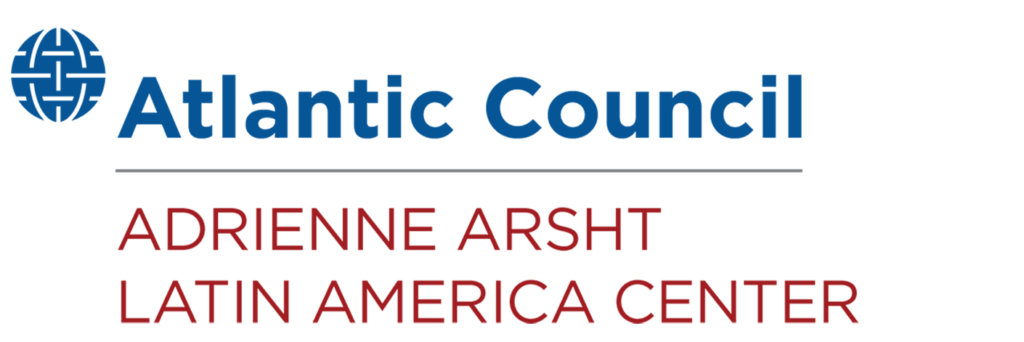Innovate to protect our ecosystems
US-COLOMBIA COOPERATION is often viewed through the prisms of security or economic interests. Yet, bilateral conservation and bio- diversity protection efforts are ongoing and have the potential to become an increasingly important component of our shared agenda. In the 2021 National Intelligence Estimate, President Joseph R. Biden’s administration said Colombia is among eleven countries globally that would be “especially helpful in mitigating future risks to US interests” in terms of cli- mate change.1NationalIntelligenceEstimate:ClimateChangeandInternationalResponsesIncreasingChallengestoUSNationalSecurityThrough2040, National Intelligence Council, December 2021, https://www.dni.gov/files/ODNI/documents/assessments/NIE_Climate_Change_and_National_Security.pdf. Our two countries are well positioned to work side-by-side to address environmental concerns, protect biodiversity, and safeguard natural resources for the entire region.
Colombia’s protected and conserved areas
As the second most biodiverse country globally, Colombia plays a key role in preserving our planet’s natural resources. The country’s commitment to conservation efforts is reflected in the establishment of its Sistema Nacional de Áreas Protegidas (National Protected Areas System or SINAP), which covers 31 million hectares (ha), equivalent to 15 percent of the country’s territory. The SINAP includes all of Colombia’s protected areas, providing essential ecosystem services to local populations, including water provisioning and regulation.
Protected areas produce the necessary water to generate 50 percent of Colombia’s hydro-energy (estimated at $502 million) and provide drink- ing water for more than twenty-five million people (an annual value of $491 million). In an average year, water provision and regulation services from national parks are expected to add at least $2.3 billion to the gross domes- tic product.2Ibid.
Troublingly, around 24 percent of Colombia’s freshwater ecosystems show transformations caused by urbanization, agriculture expansion, cattle ranching, and infrastructure development.3Luis Germán Naranjo, “Colombia Viva: un país megadiverso de cara al futuro. Informe 2017,” World Wildlife Fund-Colombia, December 2017, https://www.researchgate.net/publication/321625989_Colombia_Viva_un_pais_megadiverso_de_cara_al_futuro_Informe_2017. Future water yield will be largely determined by land usage and the impacts of climate change. Data indicates that Colombia will be unable to sustain the hydrological functionality of its watersheds without safeguarding forest, water, and coastal ecosystems via the designation and effective management of key protected areas. This would not only protect biodiversity, but also support ecosystem services such as water provision and climate regulation, enhancing community well-being.
Recognizing this, the Colombian government approved the National Policy for the Consolidation of the SINAP (CONPES No. 4050) in November 2021, aimed at “reducing the drivers of degradation of the natural and cul tural values conserved in the National System of Protected Areas.” However, Colombia’s SINAP faces a significant structural financial gap to achieve its climate and biodiversity policy goals by 2030. Barriers to addressing this gap can be grouped into two interconnected categories—both of which would benefit from a stronger partnership with the United States. The first is the inadequate capacity of environmental authorities to access and sequence funding instruments that the government has or plans to put in place. The second is management inefficiencies due to a limited capacity to develop and implement sustainable land practices and climate change adaptation mea- sures in protected areas and adjacent private lands.
As a staunch supporter of the climate change agenda, the United States could support Colombia’s efforts to preserve natural resources, biodiversity, and cultural heritage through the SINAP. It should also build on, replicate, and expand existing initiatives to support water regulation and provision in Colombia—the two most important ecosystem services. For example, the Nature Conservancy’s Water Funds Partnership help ensure that upstream communities are compensated for protecting the lands and freshwater eco- systems that supply water to cities.4“The Latin American Water Funds,” Latin American Water Funds Partnership, accessed March 20, 2022, https://www.fondosdeagua.org/en/. To date, Water Funds has helped safe- guard water sources for sixteen million people in Bogotá, Valle del Cauca, Medellín, Cali, Cúcuta, Cartagena, Santa Marta, and Ciénaga.5Ibid. It has also contributed to improved water governance among the various Colombian agencies that oversee water security.
Implementing Heritage Colombia
The strategic vision of Colombia’s SINAP 2030 policy was informed by a baseline assessment of finance for protected area management,6Ibid. recognizing that the system was already facing a $15 million annual shortfall prior to COVID-19. The assessment identified the need for a new financial model to address existing financial challenges.
In 2015, Heritage Colombia (HECO)7“Maximizing the contributions of Sustainably Managed Landscapes in Colombia for achievement of Climate Goals” (proposal submitted to the Green Climate Fund [GCF] 2021 under final approval), Heritage Colombia (HECO). was established as a possible solution—an innovative strategy to expand coverage and support the effective management and governance of Colombia’s SINAP and its surrounding landscapes. Led by the Ministry of Environment and Sustainable Development, in partnership with Parques Nacionales Naturales, Patrimonio Natural, the Gordon and Betty Moore Foundation, Conservation International, Wildlife Conservation Society, and the World Wildlife Fund, HECO contributes to the long-term conservation of more than 20 million hectares. Following the results-based payments approach of the Project Finance for Permanence (PFP), an initiative from the world of finance, HECO addresses funding gaps by leveraging diverse funding sources and significantly increasing baseline government investments in the initial implementation period. It also builds a portfolio of long-term sustainable financing mechanisms with public and private capital, allowing for the development and financing of conservation policies and programs far into the future.8The latest and most detailed description of the PFP approach and lessons learned can be found in SecuringSustainableFinancingforConservationAreas, World Wildlife Fund, December 7, 2021, https://www.worldwildlife.org/publications/securing-sustainable-financing-for-conservation-areas.
Given HECO PFP’s vast scope and estimated $1.2 billion cost, implementation will occur in phases. Phase one seeks to secure permanent protection for 8.7 million hectares of terrestrial protected areas and at least 10 million hectares of marine protected areas and their surrounding landscapes.9“Maximizing the contributions of Sustainably Managed Landscapes in Colombia for achievement of Climate Goals” (proposal submitted to GCF 2021 under final approval), Heritage Colombia (HECO). In its first ten years, HECO PFP aims to attract $100 million in new investment from government, private sector, foundations, and individual donors for four selected landscapes that include more than 500 protected areas. In the next ten years, the PFP would secure new resources from the Colombian government (way above baseline investments), generating the projected $7.2 million needed annually to address the structural financial gap.
The United States can play a critical role in supporting HECO. With over two decades of partnership, the United States has facilitated more than $60 million in investments to promote activities to preserve, protect, or effectively manage Colombia’s natural and biological resources.10US Embassy Bogotá, “A One-Hundred-Year Commitment to Conservation and Childhood in Colombia,” US Department of State, May 25, 2021, https://co.usembassy.gov/a-one-hundred-year-commitment-to-conservation-and-childhood-in-colombia/. In addition to providing HECO-specific investments in Colombia, the United States can also leverage its National Park Service experience and partner with Colombia’s SINAP to develop policies and programs for protected area management. These policies and programs could entail planning for the management of conservation areas in relation to ecotourism, capacity building in the “Leave No Trace” methodology,11“The 7 Principles,” Leave No Trace, accessed March 25, 2022, https://lnt.org/why/7-principles/. workshops on the design and maintenance of paths for visitors and sustainable infrastructure, technical assistance to improve public-private interaction in ecotourism, and climate change assessments for vulnerability management and as a criterion to declare new protected areas.
HECO’s initial interventions to protect and maintain at least ten million terrestrial ecosystems—including its expansion of terrestrial and marine protected areas—indirectly benefit approximately 34 percent of Colombia’s population. The estimated avoided emissions are 8.9 million tonnes of carbon dioxide equivalent (tCO2e) by HECO’s first ten years and 45.9 million tCO2e cumulatively over its thirty-year lifespan. This means that HECO will contribute between 14 and 18 percent of Colombia’s targeted reduction in emissions from deforestation by 2030.12“Maximizing the contributions of Sustainably Managed Landscapes in Colombia for achievement of Climate Goals” (proposal submitted to GCF 2022 under final approval) Heritage Colombia (HECO).
Expanding HECO’s impact
The US and Colombian governments have a strong track record of collaboration to protect biodiversity. They have worked together to mobilize investments and develop financial mechanisms to support protection and conservation programs. For example, the 2004 debt-for-nature swap agreement (based on the US Tropical Forest Conservation Act [TFA] of 1998) helped secure increased resources to combat deforestation, pre- serve biodiversity, promote social inclusion, and enhance governance in protected areas.13“Colombia (04-0429) – Agreement Regarding a Debt-for-Nature Swap to Prepay and Cancel Certain Debt Owed by the Government of Colombia to the Government of the United States,” US Department of State, April 29, 2004, https://www.state.gov/04-0429. The agreement remains active and contributes to the conservation and sustainable management of Colombia’s tropical forests, recognizing that tropical deforestation and forest degradation are growing challenges worldwide.
US-Colombia cooperation also led to negotiating a financial endowment scheme of $10 million, managed by Colombian Trust Fund Fondo Acción(Action Fund), to directly invest $5 million in grants and $5 million in an endowment.14Ibid. Lessons from this experience and other TFA financial mechanisms could be applied to HECO financial management.
Moving forward, the US and Colombian governments could work together to identify and structure financial mechanisms to fund HECO, including green bonds and impact investment funds. Collaboration on this front would contribute to the sustainable financial management of Colombia’s protected areas, supporting environmental services and preserving our planet’s biodiversity. The United States could also aid Colombia’s efforts to establish public-private alliances at the national and international levels to advance sustainability and income diversification for protected areas. Implementing financial mechanisms such as short-term donor support, government budget allocation, taxes, and park revenues could also help achieve a broader, more comprehensive financial strategy.
Increasing investment in productive landscapes surrounding protected areas will require coordination, efficiency, and leveraging private finance and investments from different partners. HECO is well-positioned to be a fundamental strategy in Colombia’s fight against climate change and the conservation of protected areas. And it’s a strategy that aligns with our shared bilateral interests.
Related Allies essays
A roadmap for a new type of engagement
This moment opens the door for a reimagined US partnership with Colombia based on a shared vision for a more prosperous, inclusive, and sustainable future.
Related program

The Adrienne Arsht Latin America Center broadens understanding of regional transformations and delivers constructive, results-oriented solutions to inform how the public and private sectors can advance hemispheric prosperity.
